CTA Red Line South Extension
CTA Red Line South Extension
Improving Access, Increasing Livability
CTA Red Line South Extension
Improving Access, Increasing Livability
IFrame
CTA Red Line South Extension subsections
Extending the CTA Red Line south to 130th Street as recommended by GO TO 2040 would significantly improve access to job opportunities, educational institutions, health facilities, and other resources for Greater Roseland residents.
Our region relies on its transit system, which benefits all residents and businesses in metropolitan Chicago -- not just the 2 million riders who commute each day by train or bus. Public transportation keeps cars off the roads, reduces congestion for everyone who drives, and improves air quality. The mobility enabled by transit helps our quality of life and economy by giving people more choices for getting around and encouraging businesses to locate here.
Through its Local Technical Assistance (LTA) program, CMAP collaborated with the Developing Communities Project (DCP) and the Chicago Transit Authority (CTA) on a livability report in support of the proposed CTA Red Line South Extension, which would extend the Red Line from its current terminus at the 95th Street Station four stops to 130th Street. This webpage features the livability report, a brochure summarizing the report, an engaging video, and a map gallery, all of which highlight the importance of the proposed extension and the qualitative and quantitative livability impacts of this major transportation investment. The livability report supplements the CTA's pursuit of federal New Starts funding and serves as an educational resource for the Greater Roseland community, as well as local, state, and federal partners.
GO TO 2040 recommends building the CTA Red Line South Extension because it offers three substantial benefits. The extension would:
- Increase access to jobs.
- Streamline multiple CTA and Pace bus-to-rail connections for routes south of 95th Street, substantially reducing travel times.
- Generate a catalytic economic impact in a highly distressed area of the south side of Chicago -- the Greater Roseland community.
Interactive mobility data visualizations highlight transit ridership and support the need for extending the CTA Red Line from 95th Street Station south to 130th street.
Livability Principles
Through an interagency partnership of the U.S. Department of Housing and Urban Development (HUD), U.S. Department of Transportation, and the U.S. Environmental Protection Agency, the federal government has identified six livability principles to guide investment in community and economic development. The principles are the foundation for the research and analysis of the livability report and its supporting materials.
- Provide more transportation choices.
- Promote equitable, affordable housing.
- Enhance economic competitiveness.
- Support existing communities.
- Coordinate policies and leverage investment.
- Value communities and neighborhoods.
Red Line Maps Gallery
FIG 1: Access Area
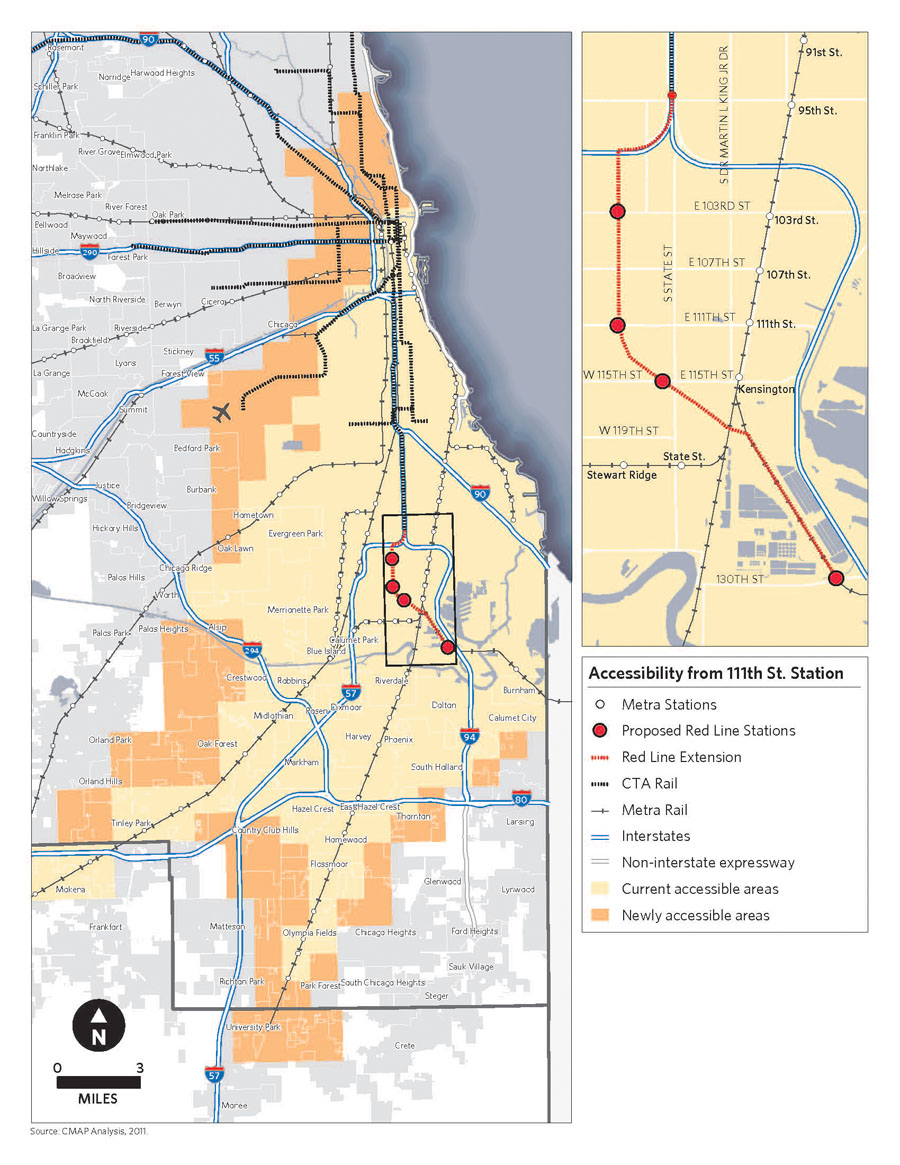
Orange areas of the map are newly accessible within an hour of the proposed 111th Street Station.
FIG 2: Bus Ridership
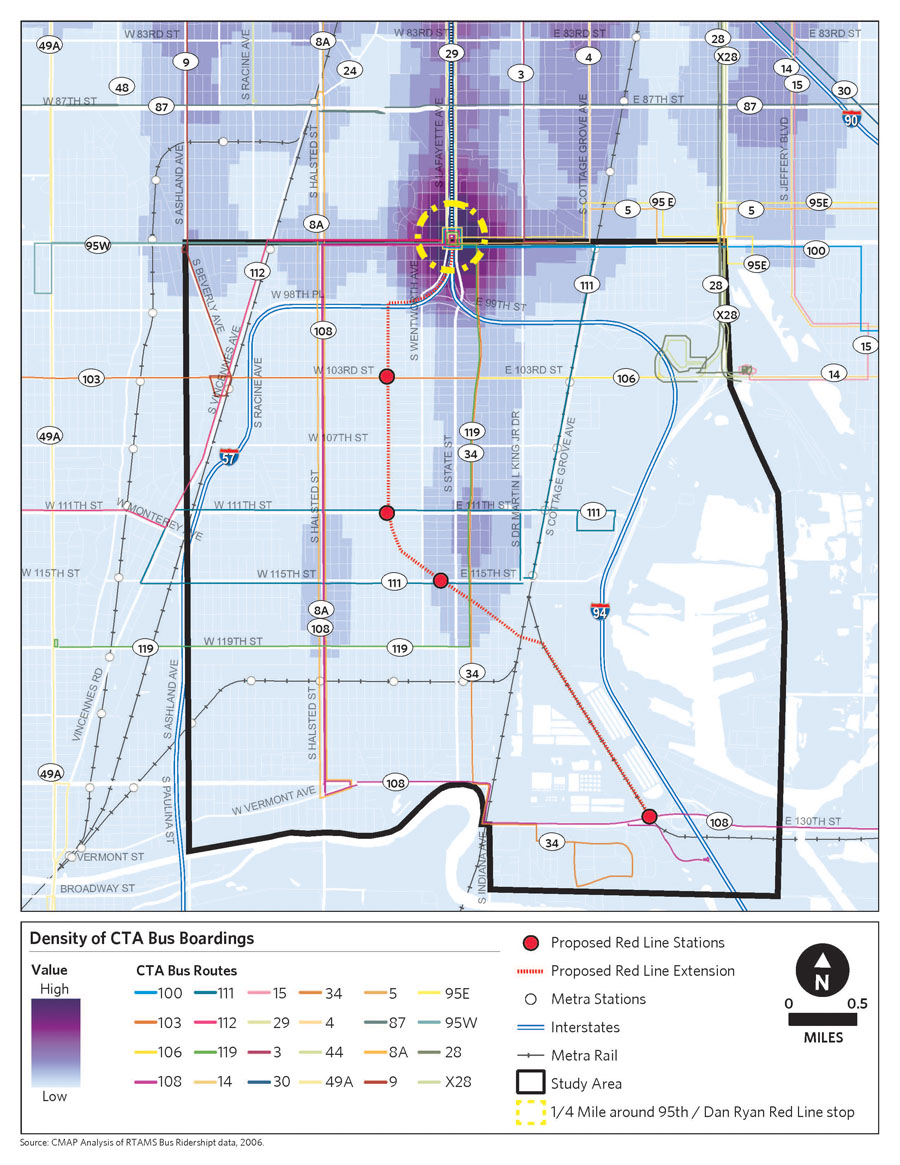
The proposed extension would greatly ease bus transit congestion in Greater Roseland.
FIG 3: Commute Time
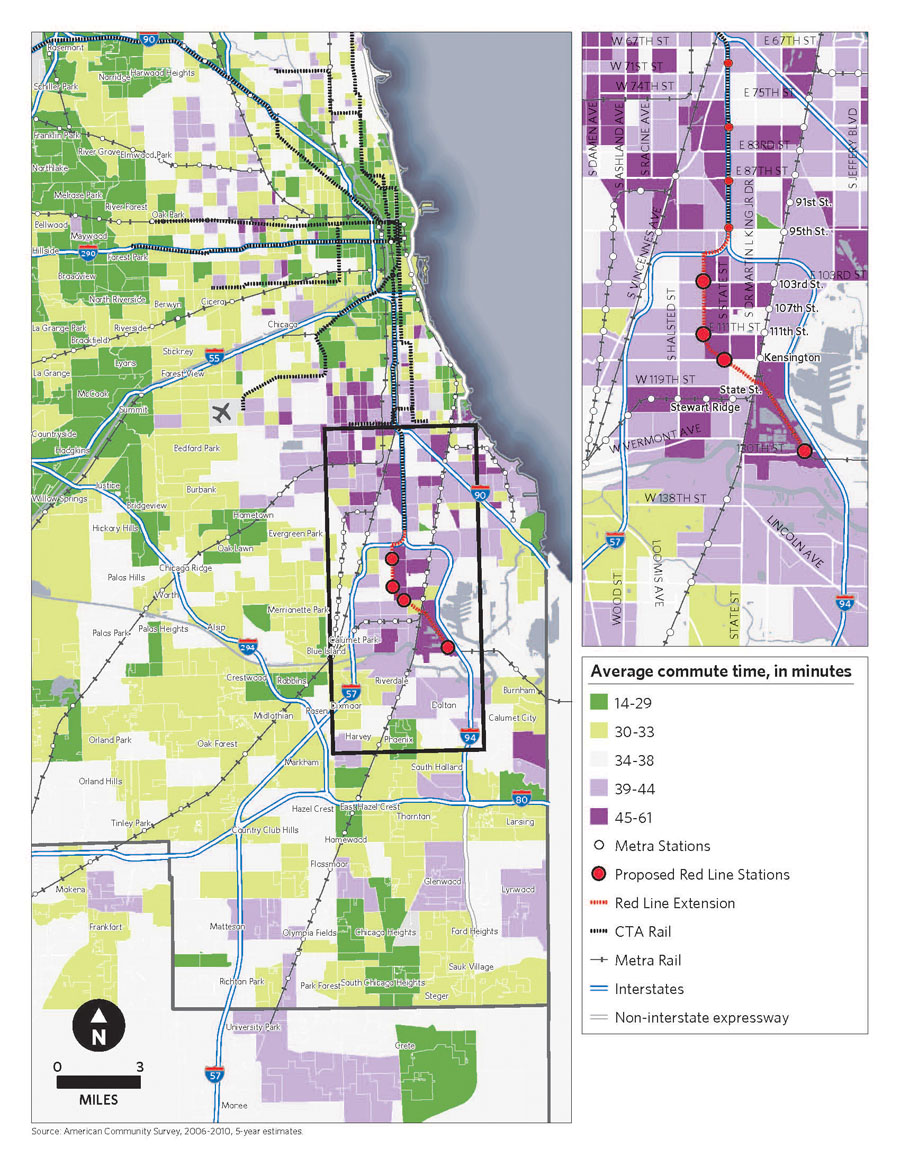
Greater Roseland residents have much higher average commute times than others living in the region.
FIG 4: Number of Workers
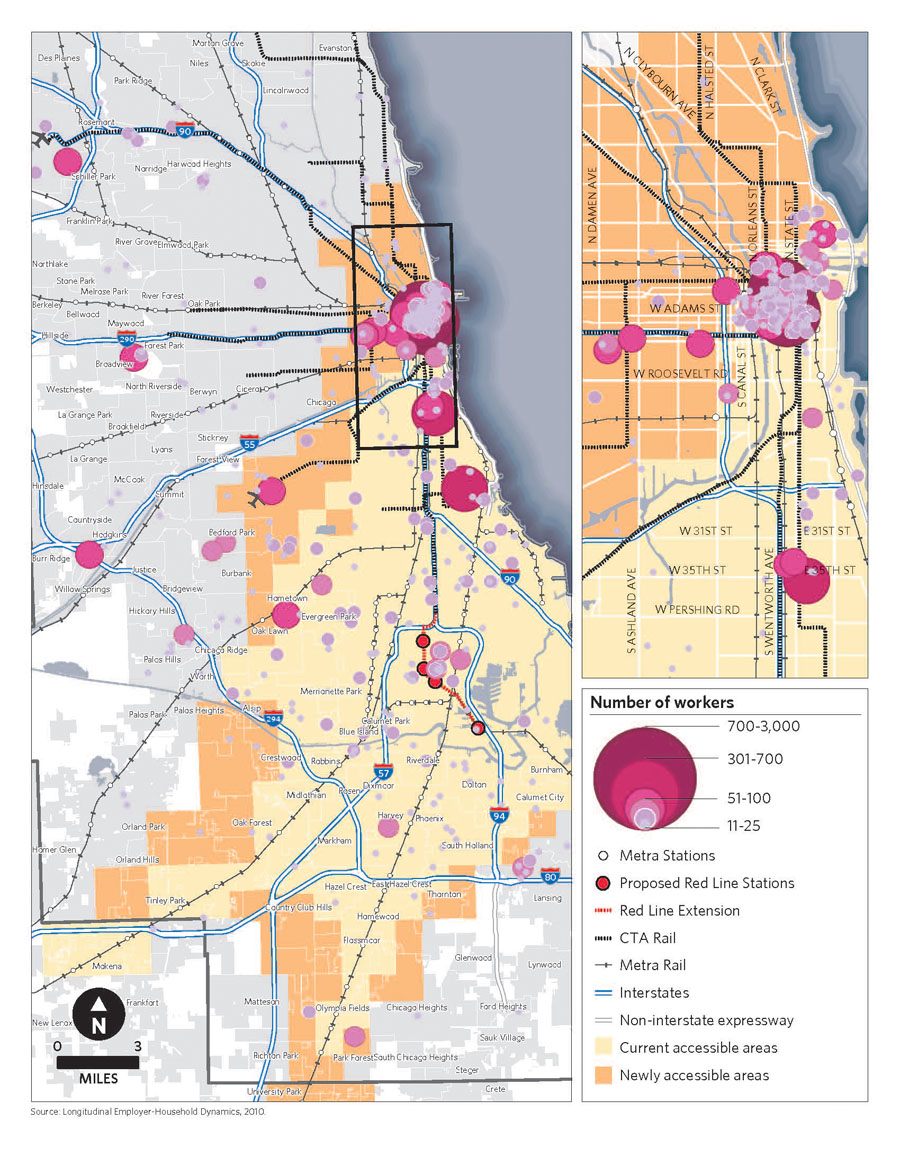
The majority of Greater Roseland residents' commutes currently take over an hour on transit.
FIG 5: Access to Jobs
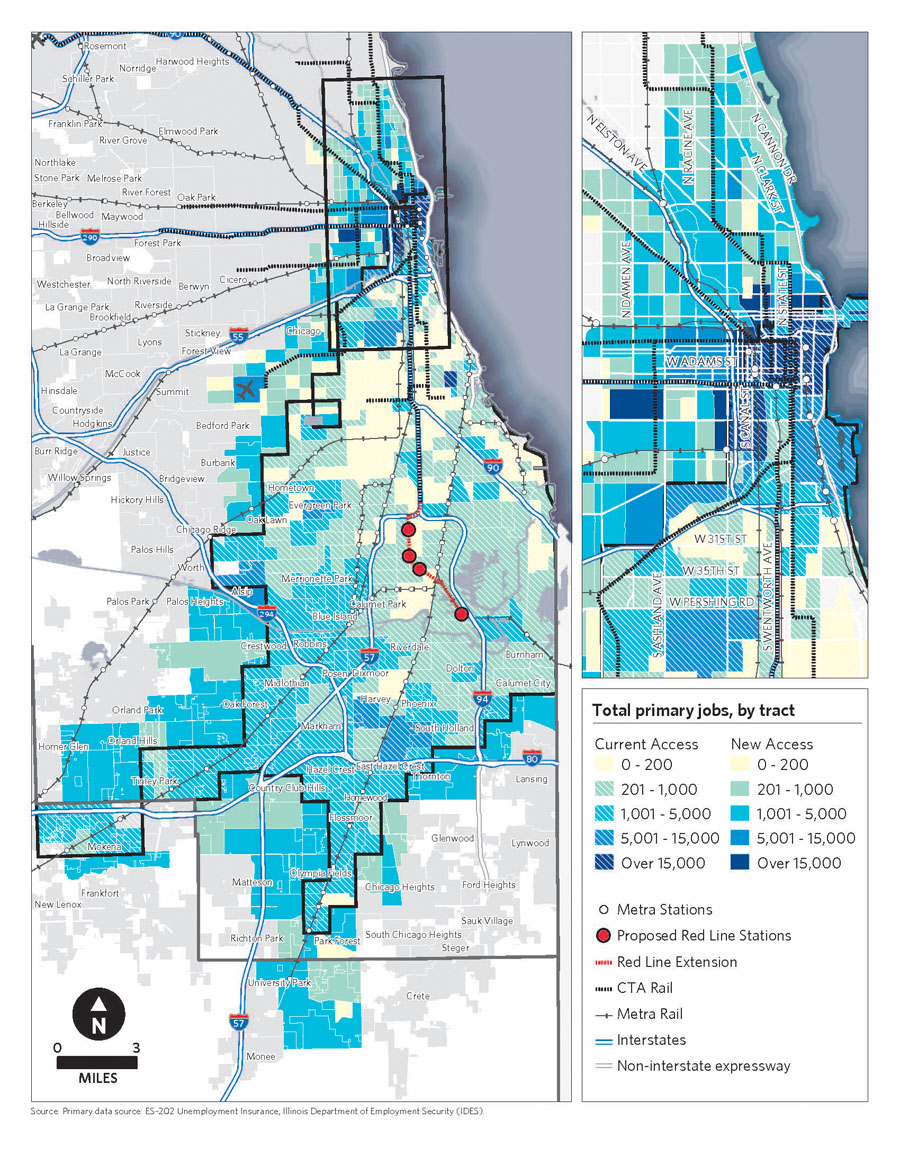
Newly accessible jobs within an hour commute of the proposed 111th Street Station would increase by 56 percent.
FIG 6: Higher Education Facilities
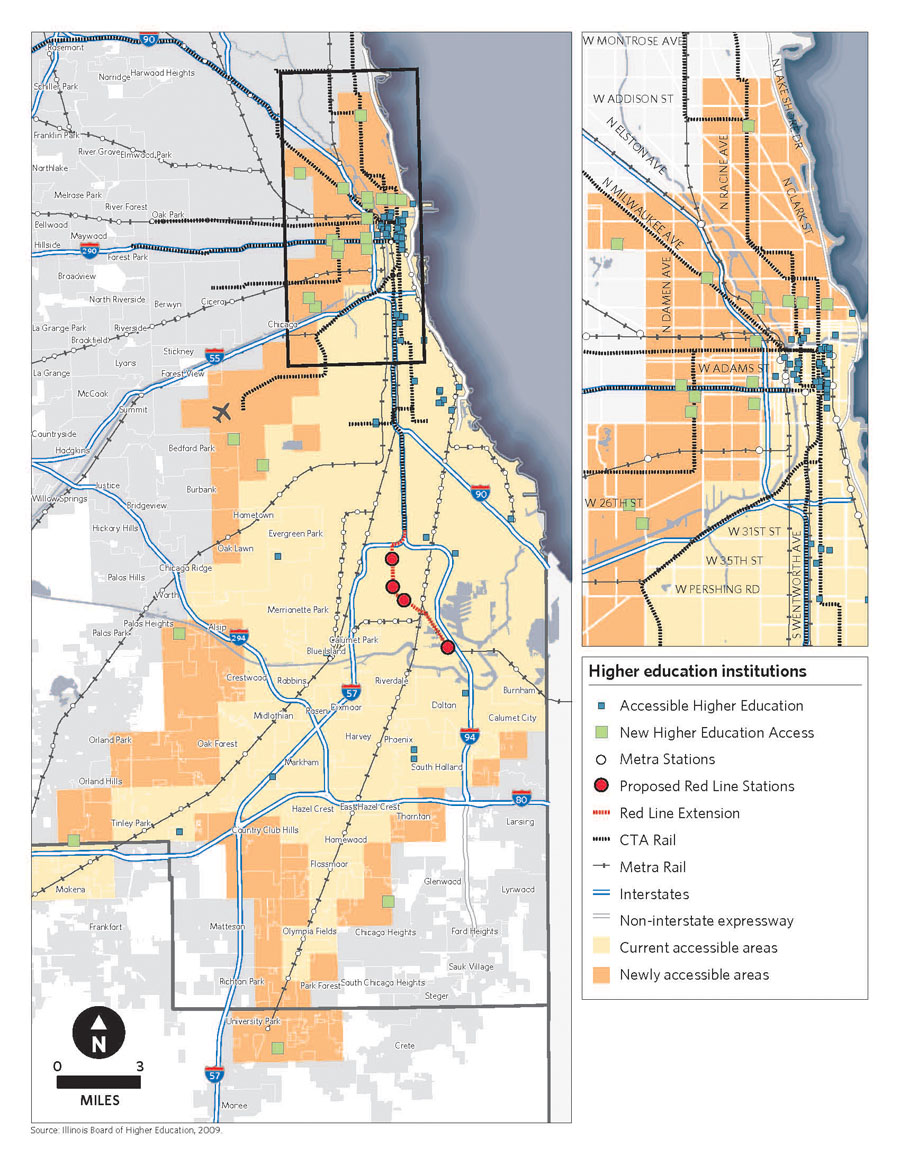
An additional 23 higher education facilities would be reachable within an hour from the proposed 111th Street Station.
FIG 7: Retail Locations
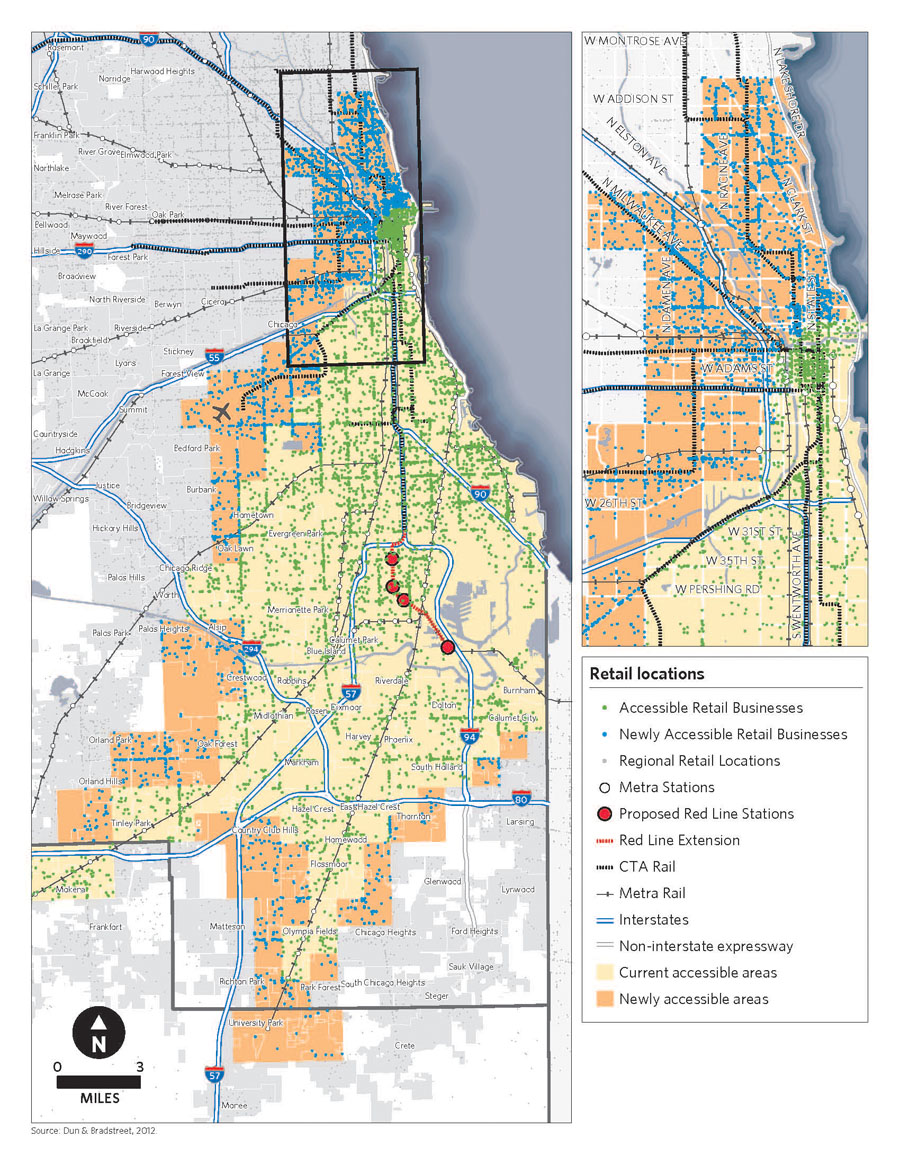
Over 4,500 retail locations would be newly accessible within an hour of the proposed 111th Street Station.
FIG 8: Open Space
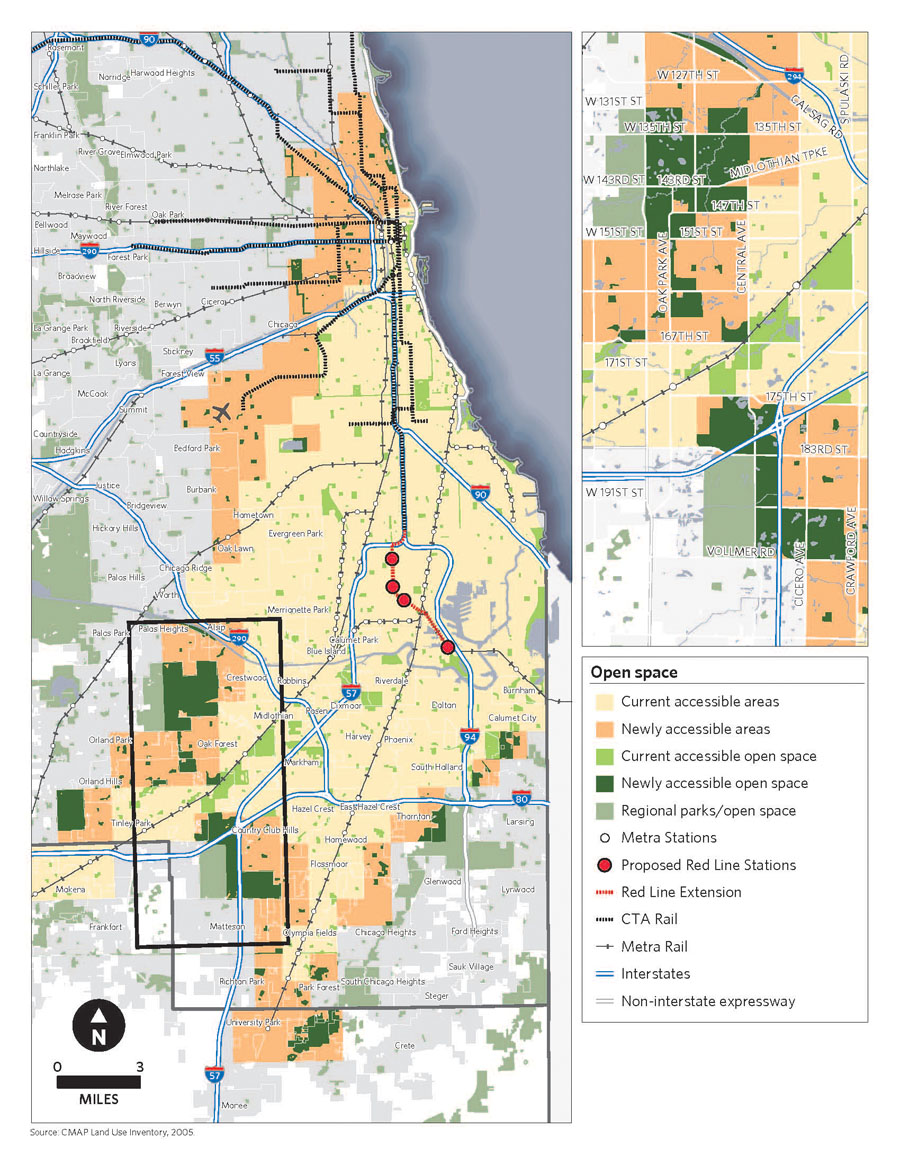
An additional 10,000 acres of open space would be within an hour commute of the proposed 111th Street Station.
FIG 9: Medical Facilities
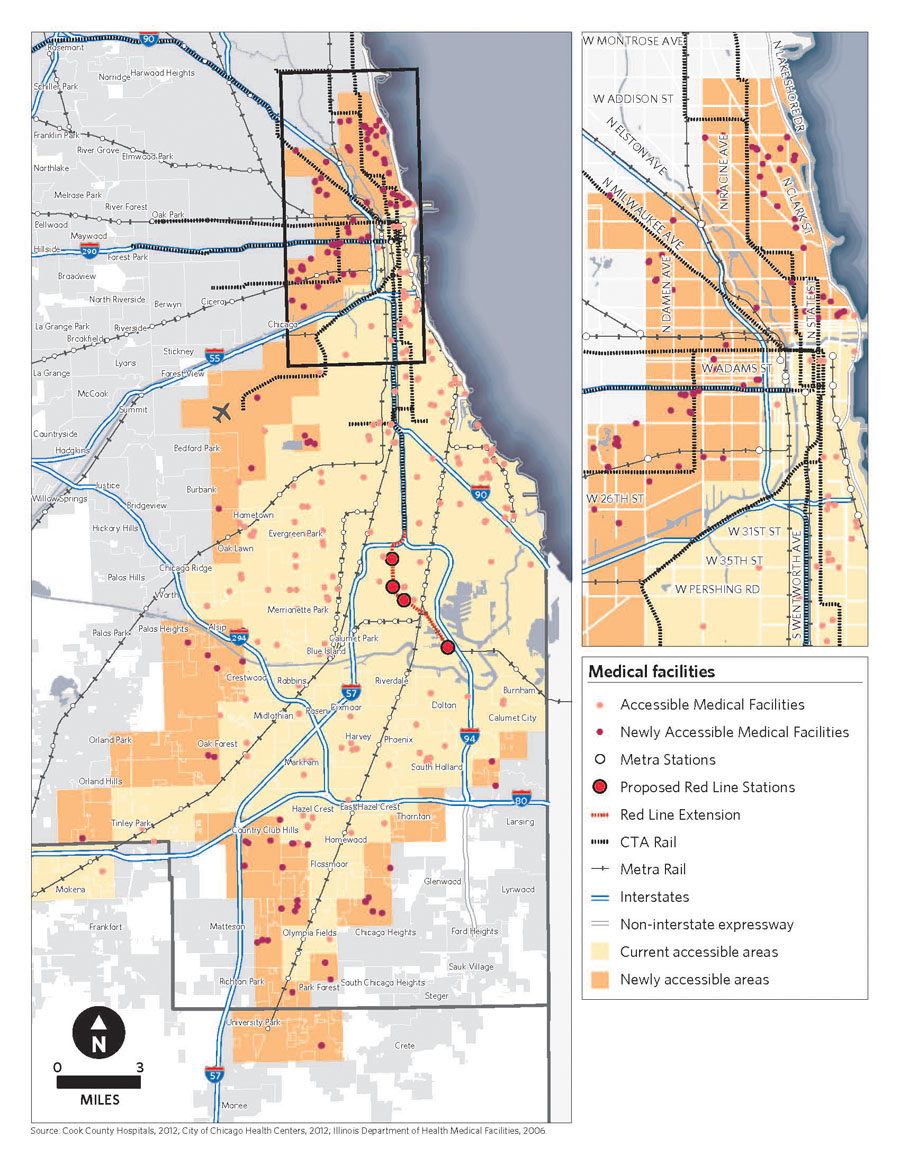
Extending the CTA Red Line south to 130th Street as recommended by GO TO 2040 would significantly improve access to job opportunities, educational institutions, health facilities, and other resources for Greater Roseland residents.
Our region relies on its transit system, which benefits all residents and businesses in metropolitan Chicago -- not just the 2 million riders who commute each day by train or bus. Public transportation keeps cars off the roads, reduces congestion for everyone who drives, and improves air quality. The mobility enabled by transit helps our quality of life and economy by giving people more choices for getting around and encouraging businesses to locate here.
Through its Local Technical Assistance (LTA) program, CMAP collaborated with the Developing Communities Project (DCP) and the Chicago Transit Authority (CTA) on a livability report in support of the proposed CTA Red Line South Extension, which would extend the Red Line from its current terminus at the 95th Street Station four stops to 130th Street. This webpage features the livability report, a brochure summarizing the report, an engaging video, and a map gallery, all of which highlight the importance of the proposed extension and the qualitative and quantitative livability impacts of this major transportation investment. The livability report supplements the CTA's pursuit of federal New Starts funding and serves as an educational resource for the Greater Roseland community, as well as local, state, and federal partners.
GO TO 2040 recommends building the CTA Red Line South Extension because it offers three substantial benefits. The extension would:
- Increase access to jobs.
- Streamline multiple CTA and Pace bus-to-rail connections for routes south of 95th Street, substantially reducing travel times.
- Generate a catalytic economic impact in a highly distressed area of the south side of Chicago -- the Greater Roseland community.
Interactive mobility data visualizations highlight transit ridership and support the need for extending the CTA Red Line from 95th Street Station south to 130th street.
Livability Principles
Through an interagency partnership of the U.S. Department of Housing and Urban Development (HUD), U.S. Department of Transportation, and the U.S. Environmental Protection Agency, the federal government has identified six livability principles to guide investment in community and economic development. The principles are the foundation for the research and analysis of the livability report and its supporting materials.
- Provide more transportation choices.
- Promote equitable, affordable housing.
- Enhance economic competitiveness.
- Support existing communities.
- Coordinate policies and leverage investment.
- Value communities and neighborhoods.
Red Line Maps Gallery
FIG 1: Access Area

Orange areas of the map are newly accessible within an hour of the proposed 111th Street Station.
FIG 2: Bus Ridership

The proposed extension would greatly ease bus transit congestion in Greater Roseland.
FIG 3: Commute Time

Greater Roseland residents have much higher average commute times than others living in the region.
FIG 4: Number of Workers

The majority of Greater Roseland residents' commutes currently take over an hour on transit.
FIG 5: Access to Jobs

Newly accessible jobs within an hour commute of the proposed 111th Street Station would increase by 56 percent.
FIG 6: Higher Education Facilities

An additional 23 higher education facilities would be reachable within an hour from the proposed 111th Street Station.
FIG 7: Retail Locations

Over 4,500 retail locations would be newly accessible within an hour of the proposed 111th Street Station.
FIG 8: Open Space

An additional 10,000 acres of open space would be within an hour commute of the proposed 111th Street Station.
FIG 9: Medical Facilities



